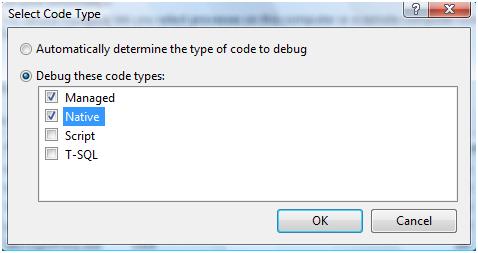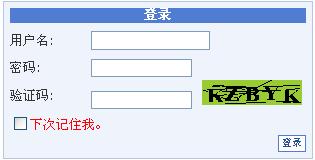|
C:/> tool “C:/Program Files/”
|
实际上传入的参数是C:/Program Files” 。其实这里不仔细看可能发现不了问题。在原来的命令行中,第一个双引号代表一个参数的开始/结束,后面/”因为.NET的解释规则不同,代表实际的双引号,而非参数的开始/结束,因此最后的结果会多出一个双引号,并且缺少一个反斜杠。
|
命令行参数
|
实际参数
|
|
“C:/Program Files/”
|
C:/Program Files”
|
|
“C:/Program Files//”
|
C:/Program Files/
|
|
“C:/Program Files///”
|
C:/Program Files/”
|
因此,正确的方式是第二个,也就是”C:/Program Files//”。
|
// Set argvw from command line
/* static */
HRESULT CorCommandLine::SetArgvW(LPCWSTR lpCommandLine)
{
…
HRESULT hr = S_OK;
if(!m_ArgvW) {
// 分析命令行 m_ArgvW = SegmentCommandLine(lpCommandLine, &m_NumArgs); // CLR特有的命令行处理,主要是和ClickOnce有关的 if (m_ArgvW)
hr = ParseCor();
else
hr = E_OUTOFMEMORY;
} return hr;
}
|
|
/* static */
HRESULT ClassLoader::RunMain(MethodDesc *pFD ,
short numSkipArgs,
INT32 *piRetVal,
PTRARRAYREF *stringArgs /*=NULL*/)
{
wzArgs = CorCommandLine::GetArgvW(&cCommandArgs); // 创建一个托管数组 StrArgArray = (PTRARRAYREF) AllocateObjectArray((cCommandArgs - numSkipArgs), g_pStringClass); // 创建对应的托管字符串并赋给托管数组的每个元素 for( arg = numSkipArgs; arg < cCommandArgs; arg++) { STRINGREF sref = COMString::NewString(wzArgs[arg]); StrArgArray->SetAt(arg-numSkipArgs, (OBJECTREF) sref); }
MethodDescCallSite threadStart(pFD); // 准备调用MethodDesc指向的主函数(EntryPoint)
ARG_SLOT stackVar = ObjToArgSlot(StrArgArray); // 将数组元素转为函数参数 *piRetVal = (INT32)threadStart.Call_RetArgSlot(&stackVar); // 调用主函数(EntryPoint) return hr;
}
|
|
//---------------------------------------------------------------------
// Splits a command line into argc/argv lists, using the VC7 parsing rules.
//
// This functions interface mimics the CommandLineToArgvW api.
//
// If function fails, returns NULL.
//
// If function suceeds, call delete [] on return pointer when done.
//
//---------------------------------------------------------------------
LPWSTR *SegmentCommandLine(LPCWSTR lpCmdLine, DWORD *pNumArgs)
{
STATIC_CONTRACT_NOTHROW; STATIC_CONTRACT_GC_NOTRIGGER; STATIC_CONTRACT_FAULT; *pNumArgs = 0; int nch = (int)wcslen(lpCmdLine); // Calculate the worstcase storage requirement. (One pointer for // each argument, plus storage for the arguments themselves.) int cbAlloc = (nch+1)*sizeof(LPWSTR) + sizeof(WCHAR)*(nch + 1); LPWSTR pAlloc = new (nothrow) WCHAR[cbAlloc / sizeof(WCHAR)]; if (!pAlloc) return NULL; LPWSTR *argv = (LPWSTR*) pAlloc; // We store the argv pointers in the first halt LPWSTR pdst = (LPWSTR)( ((BYTE*)pAlloc) + sizeof(LPWSTR)*(nch+1) ); // A running pointer to second half to store arguments LPCWSTR psrc = lpCmdLine; WCHAR c; BOOL inquote; BOOL copychar; int numslash; // First, parse the program name (argv[0]). Argv[0] is parsed under // special rules. Anything up to the first whitespace outside a quoted // subtring is accepted. Backslashes are treated as normal characters. argv[ (*pNumArgs)++ ] = pdst; inquote = FALSE; do { if (*psrc == L'"' ) {
inquote = !inquote;
c = *psrc++;
continue;
} *pdst++ = *psrc; c = *psrc++; } while ( (c != L'/0' && (inquote || (c != L' ' && c != L'/t'))) ); if ( c == L'/0' ) { psrc--; } else { *(pdst-1) = L'/0'; } inquote = FALSE; /* loop on each argument */ for(;;) { if ( *psrc ) { while (*psrc == L' ' || *psrc == L'/t')
{
++psrc;
}
} if (*psrc == L'/0')
break; /* end of args */
/* scan an argument */ argv[ (*pNumArgs)++ ] = pdst; /* loop through scanning one argument */ for (;;) {
copychar = 1;
/* Rules: 2N backslashes + " ==> N backslashes and begin/end quote 2N+1 backslashes + " ==> N backslashes + literal " N backslashes ==> N backslashes */
numslash = 0;
while (*psrc == L'//')
{
/* count number of backslashes for use below */
++psrc;
++numslash;
}
if (*psrc == L'"')
{
/* if 2N backslashes before, start/end quote, otherwise
copy literally */
if (numslash % 2 == 0)
{
if (inquote)
{
if (psrc[1] == L'"')
{
psrc++; /* Double quote inside quoted string */
}
else
{
/* skip first quote char and copy second */
copychar = 0;
}
}
else
{
copychar = 0; /* don't copy quote */
}
inquote = !inquote;
}
numslash /= 2; /* divide numslash by two */
}
/* copy slashes */
while (numslash--)
{
*pdst++ = L'//';
}
/* if at end of arg, break loop */ if (*psrc == L'/0' || (!inquote && (*psrc == L' ' || *psrc == L'/t')))
break;
/* copy character into argument */
if (copychar)
{
*pdst++ = *psrc;
}
++psrc;
} /* null-terminate the argument */ *pdst++ = L'/0'; /* terminate string */ } /* We put one last argument in -- a null ptr */ argv[ (*pNumArgs) ] = NULL; _ASSERTE((BYTE*)pdst <= (BYTE*)pAlloc + cbAlloc); return argv;
}
|





